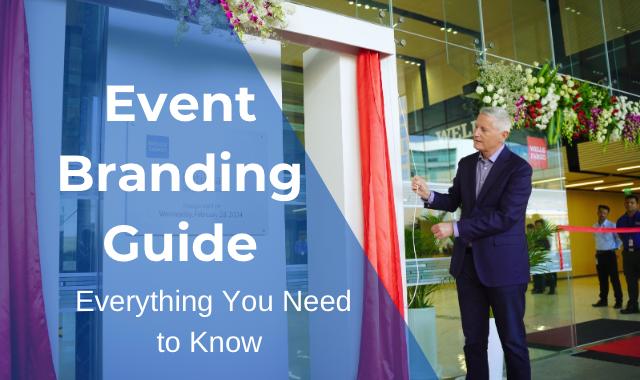Virtual events are as powerful as physical events and are here to stay.
The importance of face-to-face interactions will never diminish. However, there are instances, when virtuality is an integral component of your event’s agenda. How do you transform an event that lasts for several days, packed with networking possibilities, informative sessions into a virtual event? Is virtual event planning and virtual event technology way beyond the reach? Definitely, not. An event management company has the solution for all your needs.
Virtual events require the same level of care and attention as live events. In both instances, you must develop a plan of action to efficiently promote your event, engage guests, create memorable moments for the attendees, and show that the event was successful.
The only thing that’s not there is the venue and the participants on site. Virtual event planners need to take extra care to make the occasion more engaging to attendees. It is a value-added event.
What Is A Virtual Event?
There’s a good chance that you’ve taken part in a virtual webinar, workshop or conference using conferencing software. Perhaps you may have participated in an event while sitting at work. These are only a handful of examples of virtual events. Virtual events are those where individuals can participate in the event’s content via the Internet rather than in person. According to Google Trends, the virtualization of conferences, webinars, and corporate meetings is happening steadily in the industrial sector with the help of virtual event planners.
Types of Virtual Events
Virtual events are not an alternative to any type of event, but they are better versions of the existing events with technological advancements, tools, platforms, and more sessions. Virtual event management is gearing up in the industries with more potential in the near future.
Here are the four primary types of virtual events.
Conferences
Virtual conferences are often multi-day events on a large scale conducted by businesses, associations or industries. Their main aim is to engage a broad audience, launch products, facilitate training sessions & certification programs and present thought leadership. They are conducted as live streams, recorded sessions, and virtual expo halls with Q&A opportunities to showcase their products and services.
Webinars
Webinars are mostly educational virtual meetings focused on a specific topic. These webinars typically last between 30 minutes to 3 hours and share valuable insights on a specific topic with the selected audience. It can be either a live session or a pre-recorded session based on demand. Webinars are highly treated as a tool for marketing purposes, training and customer engagement.
Internal Hybrid Events
When a company has branches in all parts of the world, organizing virtual events will bring together everyone in the company with an opportunity to mingle among all. These meetings are generally team meetings, town halls, employee training, or corporate updates. These meetings will have a blend of in-person and remote attendees. Presentations and live chat are used as the means of communication in these events.
External Hybrid Events
Companies who want to reach beyond geographical limits prefer hybrid events. A product launch is a good example of these events. It offers options for participants either to be physically present in the event or connect virtually. It is highly suited for meetings regarding external stakeholders like clients, customers, or partners. This event also offers multiple networking opportunities, which are key for any business.
Why Host a Virtual Event?
Virtual events are planned to fulfil the same purpose as traditional events: to convey your company’s message, generate leads, increase sales, and create loyalty value over the long term. Planners of events and meetings have been deciding between in-person, virtual, and mixed events for a long time, and each has its advantages and disadvantages.
For example, webinars are beneficial for being virtual because it’s designed to cast a broad web to provide thought leadership, training, or any other kind of information, whereas the user conference or regional training program is designed to facilitate 1:1 interactions that need to be delivered face-to-face.
Microsoft’s new build includes many features supporting virtual events. If you are deciding whether or not to turn your event into a virtual event, think about what you want to get from the event and whether these goals can be achieved by using a virtual platform instead of in-person.
Why are Virtual Events the Events of the Future?
Virtual events are becoming the events of the future for several reasons. Here are some reasons to hold an online event:
1. Virtual events reach a global audience who have an internet connection to attend.
2. Virtual events are cost-effective for both organizers and attendees.
3. Virtual events are accessible for people who cannot travel due to obligations. It has on-demand options to allow participants to access recorded sessions at their convenience.
4. They are the greener alternatives to traditional events by lowering carbon footprints.
5. The utilization of digital tools like polls, surveys, and real-time analytics shares a lot of insights into how the event resonated with the audience.
6. The use of engagement tools like live chats, polls, Q&A sessions, and networking features provides better customer engagement and interaction.
Does A Virtual Event Need A Presenter?
Virtual events need a presenter to act as an anchor of the virtual event guide attendees through the agenda of the event and keep track of the proceedings. Without a presenter, even virtual events will look unstructured and attendees may lose interest.
How Do You Plan A Virtual Event?
At MAZE events and experiences, we have several experts to take care of every atom of the event. We have a checklist and a talented team to make your virtual event the best of all worlds.
If you want to know more about the virtual event planning checklist and the virtual event technology used, contact us.
FAQ:




